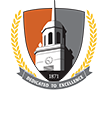The Purpose of Internal Controls
Internal controls are actions taken to help ensure that the right things happen and the wrong things don't.
Internal Controls:
- promote orderly, economical, efficient, and effective operations
- help to produce quality products and services consistent with the organization's mission
- safeguard resources against loss resulting from waste, abuse, mismanagement, errors, and fraud
- promote adherence to laws, regulations, and management directives
- help to develop and maintain reliable financial and management data, and accurately present that data in timely reports
- impact every aspect of an organization – all of its people, processes and physical structures
- are woven into the day-to-day responsibilities of managers and their staff
- provide a level of assurance to an organization, but do not guarantee success
- are dependent upon people and will succeed or fail depending on the attention people give them
- must make sense within each organization's unique operating environment
- help an organization achieve its mission
Internal Control Responsibilities
Questions to ask yourself:
- Have I exercised my responsibility for the day-to-day management of the project?
- Have I lived up to my responsibilities through diligent oversight of my job duties?
- Have I considered how this transaction would be perceived if it were reported in the newspaper?
Employee Responsibilities:
- Fulfilling the duties and responsibilities established in one’s job description
- Meeting applicable performance standards
- Following steps outlined in approved campus, department, unit or office policies and procedures
- Taking all reasonable steps to safeguard assets against waste, loss, unauthorized use and misappropriation
- Reporting breakdowns in internal control systems to your supervisor
- Refraining from the use of your official position to secure unwarranted privileges
Additional Responsibilities for Managers:
- Maintaining an environment that encourages the design of internal controls
- Documenting policies and procedures that are to be followed in performing functions
- Identifying the control objectives for the functions and implementing cost effective controls designed to meet those objectives
- Testing the controls regularly to determine if they are performing as intended

